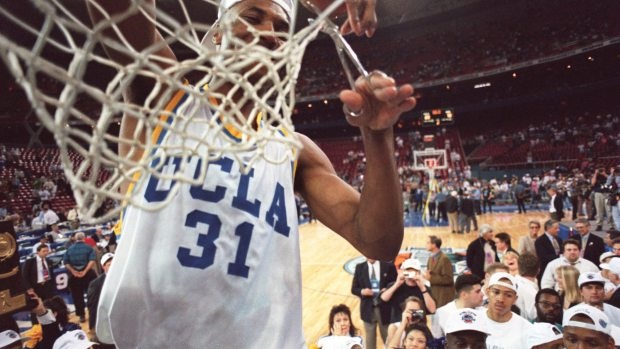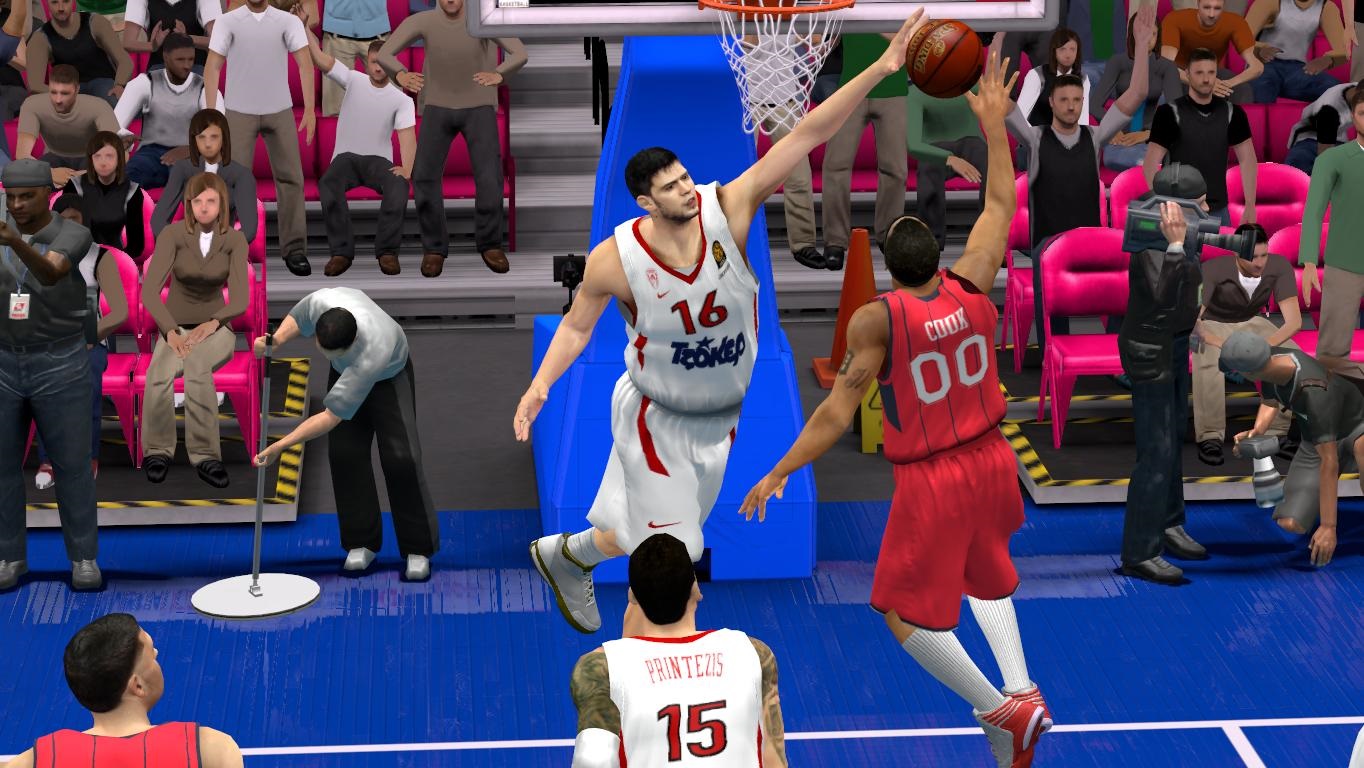Introduction
The year 2015 promises to be crucial, and possibly revolutionary, for
State aid in football. The European Commission is taking its time in concluding
its formal investigations into alleged State aid granted to five Dutch clubs
and several Spanish clubs, including Valencia CF and Real Madrid, but the final decisions are due for 2015.
A few months ago, the Commission also received a set of fresh State aid complaints originating from the EU’s newest Member State
Croatia. The complaints were launched by a group of minority shareholders of
the Croatian football club Hajduk Split, who call themselves Naš Hajduk. According to Naš Hajduk, Hajduk Split’s eternal rival, GNK Dinamo
Zagreb, has received more than 30 million Euros in unlawful aid by the city of
Zagreb since 2006.More...
Editor's note (13 July 2015): We (Ben Van Rompuy and I) have just published on SSRN an article on the Pechstein ruling of the OLG. It is available at http://papers.ssrn.com/sol3/papers.cfm?abstract_id=2621983. Feel free to download it and to share any feedback with us!
On 15 January 2015, the earth must
have been shaking under the offices of the Court of Arbitration for Sport (CAS)
in Lausanne when the Oberlandesgericht München announced its decision in the
Pechstein case. If not entirely unpredictable, the decision went very far
(further than the first instance) in eroding the legal foundations on which
sports arbitration rests. It is improbable (though not impossible) that the
highest German civil court, the Bundesgerichtshof (BGH), which will most likely
be called to pronounce itself in the matter, will entirely dismiss the
reasoning of the Oberlandesgericht. This blogpost is a first examination of the
legal arguments used (Disclaimer: it is based only on the official press release, the full text of the ruling will be published in
the coming months).More...
Over the last twenty years,
professional cycling has developed the reputation of one of the “most drug
soaked sports in the world”.[1]
This should not come as a surprise. The sport’s integrity has plummeted down
due to an unprecedented succession of doping scandals. La crème de la crème of
professional cyclists has been involved in doping incidents including Tyler Hamilton, Floyd Landis, Alejandro
Valverde
and Lance Armstrong. The once prestigious
Tour de France has been stigmatized as a race of “pharmacological feat, not a
physical one”.[2]
In view of these overwhelming shadows, in
2008, the
International Cycling Union (UCI), in cooperation with the World Anti-Doping
Agency (WADA) took a leap in the fight against doping. It became the
first International Sports Federation to implement a radical new anti-doping
program known as the Athlete
Biological Passport (ABP).[3]
More...
The summer saga surrounding Luis
Suarez’s vampire instincts is long forgotten, even though it might still play a
role in his surprisingly muted football debut in FC Barcelona’s magic triangle.
However, the full text of the CAS award in the Suarez
case has recently be made available on CAS’s website and we want to grasp this
opportunity to offer a close reading of its holdings. In this regard, one has
to keep in mind that “the object of the appeal is not to request the complete
annulment of the sanction imposed on the Player” (par.33). Instead, Suarez and
Barcelona were seeking to reduce the sanction imposed by FIFA. In their eyes, the
four-month ban handed out by FIFA extending to all football-related activities
and to the access to football stadiums was excessive and disproportionate. Accordingly,
the case offered a great opportunity for CAS to discuss and analyse the
proportionality of disciplinary sanctions based on the FIFA Disciplinary Code (FIFA DC). More...
In a first
blog last month we discussed the problem of the scope of jurisdiction of
the Ad Hoc Division of the Court of Arbitration for Sport. The key issue was
whether an athlete could get his case heard in front of the CAS Ad Hoc Division
or not. In this second part, we will also focus on whether an athlete can access
a forum, but a different kind of forum: the Olympic Games as such. This is a
dramatic moment in an athlete’s life, one that will decide the future path of
an entire career and most likely a lifetime of opportunities. Thus, it is a
decision that should not be taken lightly, nor in disregard of the athletes’
due process rights. In the past, several (non-)selection cases were referred to
the Ad Hoc Divisions at the Olympic Games, and this was again the case in 2014,
providing us with the opportunity for the present review.
Three out of four cases dealt with
by the CAS Ad Hoc Division in Sochi involved an athlete contesting her eviction
from the Games. Each case is specific in its factual and legal assessment and
deserves an individual review. More...
The rise of Dutee Chand, India’s 100 and 200-meter champion
in the under 18-category, was astonishing. Her achievements were more than
promising: after only two years, she broke the 100m and 200m national junior
records, competed in the 100m final at the World Youth Athletics Championships
in Donetsk and collected two gold medals in the Asian Junior Championships in
Chinese Taipei. But, in July 2014, this steady rise was abruptly halted.
Following a request from the Athletics Federation of India (AFI), the Sports
Authority of India (SAI) conducted blood tests on the Indian sprinters. Dutee
was detected with female hyperandrogenism, i.e a condition where the female
body produces high levels of testosterone. As a result, a few days before the
Commonwealth Games in Glasgow, the AFI declared Dutee
ineligible to compete under the IAAF Regulations and prevented her from competing in future national and
international events in the female category. Pursuant to the IAAF
‘Hyperandrogenism Policy’, the AFI would allow Dutee to return to competition
only if she lowers her testosterone level beneath the male range by means of
medical or surgical treatment.[1]
On 25 September 2014, Dutee filed an appeal before
the CAS, seeking to
overturn the AFI’s decision and declare IAAF and IOC’s hyperandrogenism
regulations null and void. She is defending her right to compete the way she
actually is: a woman with high levels of testosterone. Interestingly enough,
albeit a respondent, AFI supports her case.
IAAF and IOC rules set limits to female
hyperandrogenism, which is deemed an unfair advantage that erodes female sports
integrity. While these rules have been contested with regard to their scientific and ethical aspects, this is the first time
that they will be debated in court. This appeal could have far-reaching
ramifications for the sports world. It does not only seek to pave the way for a
better ‘deal’ for female athletes with hyperandrogenism, who are coerced into
hormonal treatment and even surgeries to ‘normalise’ themselves as women[2],
but it rather brings the CAS, for the first time, before the thorny question:
How to strike a
right balance between the core principle of ‘fair play’ and norms of
non-discrimination, in cases where a determination of who qualifies as a ‘woman’
for the purposes of sport has to be made? More...
On 8 August, U.S. District
Judge Claudia Wilken ruled in favour of former UCLA
basketball player O'Bannon and 19 others, declaring that NCAA's longstanding refusal
to compensate athletes for the use of their name, image and likenesses (NILs) violates
US antitrust laws. In particular, the long-held amateurism
justification promoted by the NCAA was deemed unconvincing.
On
14 November, the NCAA has appealed the judgment, claiming that federal judge erred in law by
not applying a 1984 Supreme Court ruling. One
week later, the NCAA received support from leading antitrust professors who are challenging the
Judge Wilken’s reasoning in an amicus curiae. They are concerned that the judgment may jeopardize
the proper regulation of college athletics. The professors argued that if
Wilken’s judgment is upheld, it
“would substantially expand the power of the federal courts to alter
organizational rules that serve important social and academic interests…This
approach expands the ‘less restrictive alternative prong’ of the antitrust rule
of reason well beyond any appropriate boundaries and would install the
judiciary as a regulatory agency for collegiate athletics”.
More...
In the wake of the
French Labour Union of Basketball (Syndicat National du Basket, SNB) image
rights dispute with Euroleague and EA Games, we threw the “jump ball” to start
a series on players’ image rights in international professional basketball. In our first blogpost, we discussed why
image rights contracts in professional basketball became a fertile ground for disputes
when it comes to the enforcement of these contracts by the Basketball Arbitral
Tribunal (BAT). Indeed, we pointed out that clubs might take advantage of the
BAT’s inconsistent jurisprudence to escape obligations deriving from image
rights contracts.
In this second limb, we will open a second
field of legal battles “around the rim”: the unauthorized use of players’ image
rights by third parties. We will use as a point of reference the US College
Athletes image rights cases before US Courts and we will thereby examine the
legal nature of image rights and the precise circumstances in which such rights
may be infringed. Then, coming back to where we started, we will discuss the
French case through the lens of US case law on players’ image rights.

Source: http://philadelphia.cbslocal.com/2013/09/27/ea-sports-settles-college-likeness-case/ More...
A warning
addressed to fans of French teams featuring in the recently launched video game
NBA 2K15: Hurry up! The last jump ball for Strasbourg and Nanterre in NBA 2K 15
may occur earlier than expected. The French Labour Union of Basketball (Syndicat
National du Basket, SNB) is dissatisfied that Euroleague and 2K Games did not
ask (nor paid) for its permission before including the two teams of Pro A in
the NBA 2K15 edition. What is at issue? French
basketball players’ image rights have been transferred to SNB, which intends to
start proceedings before the US Courts against 2K Games requesting 120.000
euros for unauthorized use of the players’ image rights. SNB is clear: it is
not about the money, but rather to defend the players’ rights.[1]
Strasbourg and Nanterre risk to “warm up” the virtual bench if this litigation
goes ahead.

Source: http://forums.nba-live.com/viewtopic.php?f=149&t=88661&start=250 More...
The European
Commission’s competition decisions in the area of sport, which set out broad
principles regarding the interface between sports-related activities and EU
competition law, are widely publicized. As a result of the decentralization of
EU competition law enforcement, however, enforcement activity has largely
shifted to the national level. Since 2004, national competition authorities
(NCAs) and national courts are empowered to fully apply the EU competition
rules on anti-competitive agreements (Article 101 TFEU) and abuse of a dominant
position (Article 102 TFEU).
Even though
NCAs and national courts have addressed a series of interesting competition
cases (notably dealing with the regulatory aspects of sport) during the last
ten years, the academic literature has largely overlooked these developments.
This is unfortunate since all stakeholders (sports organisations, clubs,
practitioners, etc.) increasingly need to learn from pressing issues arising in
national cases and enforcement decisions. In a series of blog posts we will
explore these unknown territories of the application of EU competition law to
sport.
In this second installment of this blog series, we discuss a recent
judgment of the regional court (Landgericht) of Dortmund finding that the
International Handball Federation (IHF)’s mandatory release system of players
for matches of national teams without compensation infringes EU and German
competition law.[1] More...